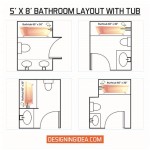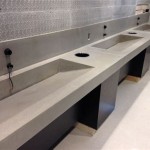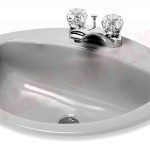Bathroom Vanity Assembly Instructions
The installation of a bathroom vanity is a common home improvement project that can significantly enhance the aesthetics and functionality of a bathroom. This document provides a detailed, step-by-step guide to assembling a typical bathroom vanity. While specific models may vary slightly, the general principles and procedures outlined here should apply to most standard vanities. Prior to commencing assembly, verify that all components listed on the packing slip are present and undamaged. Missing or damaged parts should be reported to the manufacturer or retailer immediately.
This guide assumes the vanity is a freestanding model, which is the most common type. Wall-mounted vanities require a different installation process, which is not covered in this document. Furthermore, this guide focuses solely on the assembly of the vanity itself and does not cover plumbing connections, countertop installation (if separate), or backsplash installation. These aspects require specialized skills and are best left to qualified professionals.
Before beginning, gather the necessary tools. These typically include: a Phillips head screwdriver, a flathead screwdriver, an adjustable wrench, a level, a measuring tape, a drill with various bits (including a pilot drill bit), a pencil, safety glasses, and work gloves. Having these tools readily available will streamline the assembly process and minimize delays. Ensure adequate lighting in the workspace to facilitate clear visibility during assembly. A well-lit workspace is crucial for accurate work and prevents potential injuries.
Key Point 1: Preparing for Assembly
The first crucial step involves unpacking all components and laying them out on a protected surface. Cardboard from the packaging can be used to prevent scratches during assembly. This systematic approach allows for easy identification of each piece and ensures that nothing is overlooked. Refer to the assembly diagram provided by the manufacturer to familiarize oneself with the names and shapes of all components. This is essential for a smooth and efficient assembly process.
Carefully inspect each component for any signs of damage incurred during shipping. Pay particular attention to corners, edges, and finished surfaces. Minor imperfections may be repairable with touch-up paint or wood filler, but significant damage may warrant a replacement part. Document any damage with photographs and contact the supplier immediately. Failure to report damage promptly may complicate the replacement process.
Sort the hardware, such as screws, dowels, and cam locks, and organize them into separate containers or bags. Labeling each container with the corresponding part number from the assembly diagram will significantly speed up the assembly process. Nothing is more frustrating than searching through a pile of unsorted hardware while trying to assemble the vanity. This simple organizational step can save a considerable amount of time and effort.
Read the entire assembly manual thoroughly before commencing any work. Understanding the sequence of steps and the purpose of each component will prevent errors and ensure a structurally sound assembly. Pay particular attention to any specific warnings or cautions provided by the manufacturer. Ignoring these warnings could result in damage to the vanity or personal injury.
Ensure the floor where the vanity will be installed is level. An unlevel floor can cause the vanity to wobble and make it difficult to align doors and drawers. Use a level to check the floor's surface, and if necessary, use shims to create a level base for the vanity. This is a critical step for achieving a professional and aesthetically pleasing installation.
Key Point 2: Assembling the Vanity Cabinet
The main cabinet usually consists of side panels, a base panel, a top support panel, and a back panel. Begin by attaching the side panels to the base panel. Most modern vanities utilize cam locks and dowels for this purpose. Insert the dowels into the pre-drilled holes on the base panel and then align the side panels accordingly. Tighten the cam locks using a screwdriver to secure the connection. Ensure the panels are flush and square before fully tightening the cam locks.
Next, attach the top support panel. This panel provides structural support and serves as a mounting surface for the countertop (if the countertop is not pre-installed). Align the top support panel with the side panels and secure it using screws and/or cam locks. Ensure the panel is level and securely fastened. The stability of the entire vanity depends on the proper installation of this panel.
The back panel is typically attached using screws or staples. It provides additional structural support and prevents items from falling behind the vanity. Align the back panel with the side and base panels and secure it using the appropriate fasteners. Ensure the back panel is flush with the edges of the other panels for a clean and professional look.
Once the main cabinet is assembled, install any shelves or internal dividers. These components are usually secured using shelf supports or screws. Refer to the assembly diagram for the correct placement of these components. Ensure the shelves are level and securely fastened to prevent them from collapsing under weight.
Inspect all connections and ensure that all screws and cam locks are properly tightened. A loose connection can compromise the structural integrity of the vanity and lead to premature failure. Double-check all connections before proceeding to the next step.
Key Point 3: Installing Doors, Drawers, and Hardware
After the main cabinet is assembled, the next step is to install the doors and drawers. Begin by attaching the hinges to the doors. The hinges are typically pre-installed, but adjustments may be necessary to ensure proper alignment. Use a screwdriver to adjust the hinge screws until the doors are aligned correctly and close smoothly.
Attach the drawer slides to the inside of the cabinet frame. The drawer slides should align with the pre-drilled holes. Use screws to secure the drawer slides to the cabinet frame. It is crucial to ensure that the drawer slides are level and parallel to each other for smooth drawer operation.
Assemble the drawer boxes. Drawer boxes typically consist of four sides and a bottom panel. Use screws or staples to assemble the drawer boxes. Ensure the drawer boxes are square and the joints are tight. A poorly assembled drawer box will not function properly and may fall apart over time.
Attach the drawer faces to the drawer boxes. Align the drawer faces with the drawer boxes and secure them using screws. The drawer faces should be flush with the surrounding cabinet frame. Adjust the position of the drawer faces until they are properly aligned.
Install the knobs or pulls on the doors and drawers. Pre-drill holes for the knobs or pulls, if necessary. Use screws to secure the knobs or pulls to the doors and drawers. Ensure the knobs or pulls are aligned correctly and tightened securely. The hardware should complement the style of the vanity and provide a comfortable grip.
Finally, install any decorative trim or molding. This may involve attaching trim pieces to the front or sides of the vanity using adhesive or fasteners. Ensure the trim is aligned correctly and securely attached. The trim should enhance the aesthetic appeal of the vanity and provide a finished look.
Once the vanity is fully assembled, carefully inspect it for any remaining issues. Tighten any loose screws or adjust any misaligned components. Clean the vanity with a damp cloth to remove any dust or debris. The vanity is now ready for installation in the bathroom. Remember that plumbing and countertop installation (if separate) are separate processes and may require professional assistance.
By following these detailed instructions, individuals can successfully assemble a bathroom vanity and enhance the functionality and appearance of their bathroom space. While the process may seem daunting at first, careful planning, attention to detail, and adherence to the manufacturer's instructions will ensure a satisfactory outcome. Remember to prioritize safety throughout the assembly process and seek professional assistance when needed.

48 Quot Vanity Door Drawer Combo Euro Rite Cabinets

Bathroom Vanity 3 Drawer Base Vintage White Inset Raised Panel Cabinets 21 Deep 18 Wide

Bathroom Vanity Sink Base Vintage White Inset Raised Panel Cabinets 21 Deep 24 27 30 36 Wide

Bathroom Side Drawers Vanity Sink Base Dark Gray Inset Shaker Cabinets 21 Deep
Bathroom Vanity Assembly Manual

Vanity Instructions Archives Heeby S Surplus Inc

Vogue 211198 Edge Wall Vanity Installation Guide

Allen Roth 261205 261062 Vanity With Top Installation Guide
Bathroom Vanity Assembly Manual

12 Easy Steps To Install Bathroom Vanity And Sink
Related Posts







